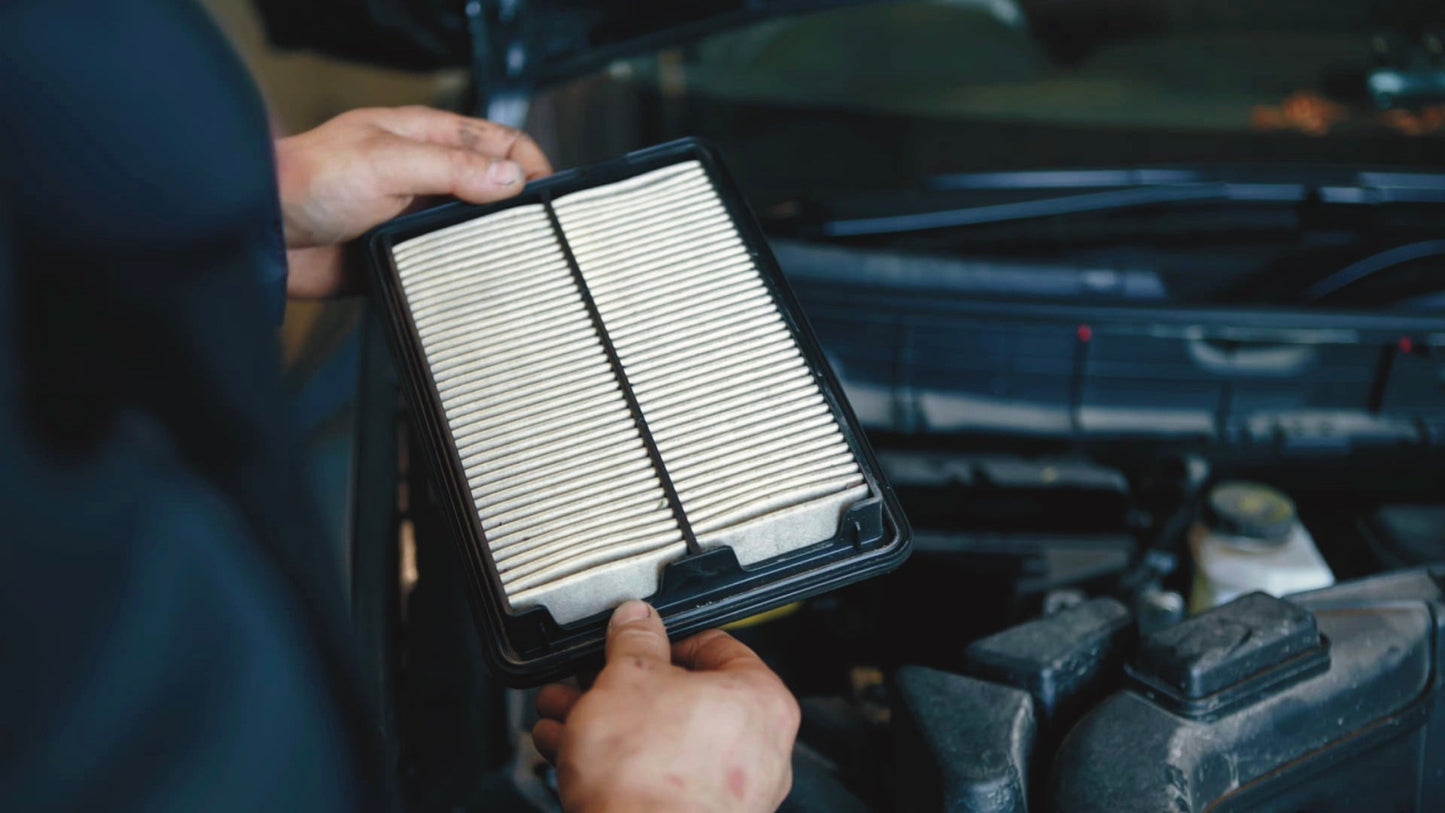
The Truth About Wrenching at Home
If you’re new to working on cars, it can feel like the world of DIY maintenance is reserved for pros with toolboxes the size of refrigerators. But here’s the truth: you don’t need a garage full of Snap-On tools or years of mechanical experience to take care of your ride.
A basic tune-up is nothing more than a handful of small, simple jobs that make your car run smoother, last longer, and save you money at the shop. And the best part? You can do all of these with basic hand tools and a free Saturday afternoon.
Step 1: Swap Your Air Filter
Your car breathes just like you do. A dirty air filter chokes performance and fuel economy.
Where to find it: Pop the hood — most air filters are in a plastic box with clips or screws.
Tools you need: Usually none, maybe a screwdriver.
How to do it: Open the box, pull out the old filter, drop in the new one. Done.
Time: 5 minutes.
👉 Pro tip: Don’t overthink it. If you can open a cereal box, you can swap an air filter.
Can’t see the video? Watch on YouTube.
Step 2: Check and Top Off Fluids
Fluids are your car’s lifeblood. Keeping them topped off prevents headaches down the road.
Engine Oil: Pull the dipstick, wipe, reinsert, pull again — oil should sit between the “low” and “full” marks.
Coolant, Brake, and Power Steering Fluid: Clear reservoirs under the hood — check levels against the markings.
Windshield Washer Fluid: The easiest win.
👉 If you’re low, top up with the right fluid (always check your owner’s manual). No shame in labeling bottles with a Sharpie if you’re new to this.
Step 3: Fresh Spark Plugs
This one feels intimidating — but it’s more straightforward than most people think.
Why it matters: Spark plugs ignite your fuel/air mix. Old plugs mean rough idling, worse mileage, and sluggish starts.
Tools you need: Ratchet, socket set, spark plug socket (cheap at any parts store).
How to do it:
Remove one ignition coil or plug wire at a time (don’t mix them up).
Unscrew old plug, screw in new plug hand-tight, then snug it with the ratchet.
Repeat, one at a time.
Time: About 10–20 minutes per plug.
👉 Think of it like swapping batteries in a flashlight — just one at a time, no rush.
Step 4: Tires — Pressure & Rotation
Your tires do more for performance and safety than anything else on the car.
Check pressure: A $10 tire gauge will tell you instantly. Use the sticker in your driver’s door for the right PSI.
Rotate tires: If you’re up for it, swap the fronts to the back and backs to the front (diagonally if you’re RWD). This evens out wear.
👉 Even just checking pressure once a month is a game-changer for tire life and fuel economy.
Step 5: Battery TLC
A weak battery can leave you stranded — but keeping it healthy is easy.
Visual check: Look for corrosion (white or green gunk) on the terminals.
Clean it: Baking soda + water + an old toothbrush works wonders.
Tighten connections: Wiggle test — if the cables move, snug them down.
👉 This tiny bit of care can save you the hassle of a no-start morning.
Final Gear
That’s it — you’ve just covered the core of a DIY tune-up. No lifts, no advanced tools, no reason to feel intimidated. Each of these steps adds up to a car that runs smoother, lasts longer, and gives you the satisfaction of saying, “Yeah, I did that myself.”
So next time you feel the itch to work on your car, grab a ratchet, a filter, and a little confidence. You’ll be surprised how quickly wrenching goes from intimidating to addicting.
🔥 Question: What was the first DIY job you ever did on your car? Did it go smooth, or did you end up with a few “extra bolts” left over?
